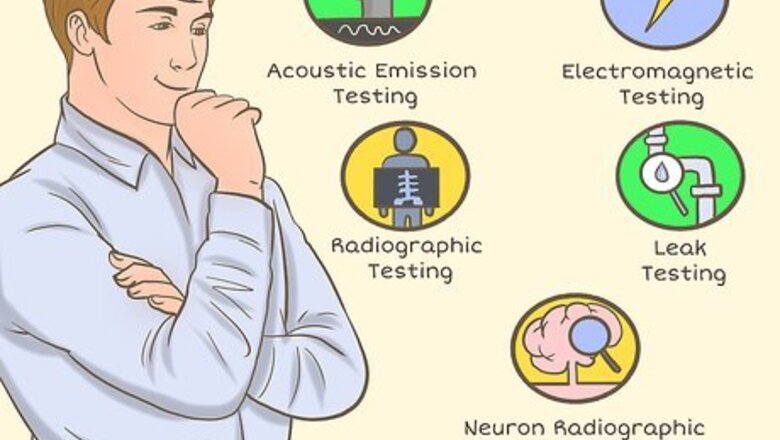
views
Training for Level I, II, and III Certification
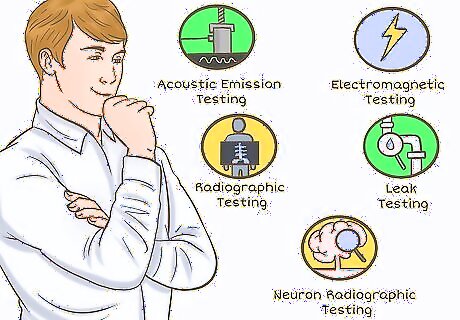
Determine what NDT method you want to be trained in. There are many NDT methods you can become certified in, depending on your desired or current career. If your employer requires NDT training and certification, they will tell you what specific method or methods you need for your training. Some common NDT methods include Acoustic Emission Testing, Electromagnetic Testing, Radiographic Testing, Leak Testing, and Neuron Radiographic Testing. For example, if you’re training to become an MRI technician, you may need to get certified in Electromagnetic and Radiographic Testing methods.
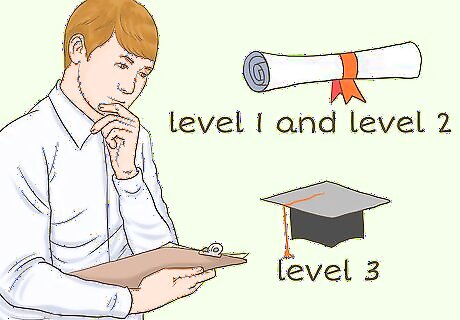
Figure out what level of training you need to obtain. Certifications can be obtained at Level I, Level II, or Level III, with Level III being the highest level of qualification. Your employer may require a certain level, or it may be a matter of personal choice, depending on how much you want to advance your career. Typically, Level I and Level II trainees must have a high school diploma or GED equivalent. To get Level III certification, the trainee is usually required to have a 2 or 4-year degree in engineering or science from an accredited university and at least 1 year of hands-on experience.

Complete any prerequisite coursework or training, if required. Prerequisites may or may not be needed, depending on your chosen NDT method, your employer’s requirements, and the country in which you live. Check the related NDT guidelines for your specific situation to figure out if you need to complete any prerequisites. You must fulfill prerequisites with a recognized training organization. Be sure to get documentary proof that you’ve completed the training. The training organization or your instructor can provide this document for you. For example, in Canada, candidates that want to train in Radiography Testing must complete an 8-hour safety course and be pre-screened for their mathematical skills.

Take the organized courses for your desired method and level. The hours of coursework required for certification varies depending on the method and level, so check the guidelines for specific information. You can take the classes at colleges, vocational-technical schools, through the Armed Forces, or with commercial or company training companies. Your employer will tell you where to take the courses and which ones you need to complete. For example, a Level I Radiographic trainee has to complete 40 hours of coursework. 80 hours are required for Level II trainees. If you already have an engineering or science degree, the hours of coursework required may be reduced.
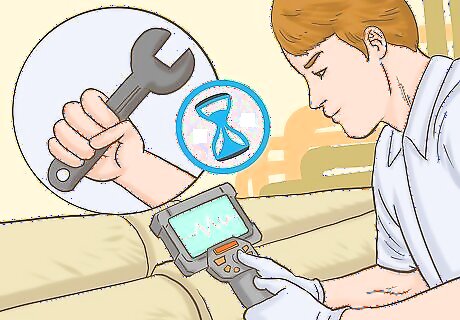
Complete the required amount of hands-on work experience. Each level requires a certain amount of work experience that must be obtained from your employer before you can be certified. You’ll be trained by a certified Level II or Level III technician. Specific work activities like observation, setting up and executing test procedures, and performing calibrations are all part of the experience process. The specific work activities will vary, depending on your NDT method. The length of experience required before certification should be specified in your employer’s Written Practice. If it’s not, ask your employer.
Taking the Required Examinations for Certification

Complete the written general examination. This exam covers the basic knowledge and principles that you learned through the required coursework for your particular NDT method. The test usually includes 20-40 questions and you will use your class materials to study for it. Your employer will tell you where and when to complete this exam. Level I and II exams are usually administered by an NDT Level III technician within your company. If this isn’t possible, you can also take Level I, II, and III exams through a central agency like ASNT. Central agencies will give you documentation of qualification.

Pass the written specific examination. This exam tests your knowledge of the procedures, equipment, codes, and techniques required to perform your job. Your employer may have study materials for you, but the knowledge should be gleaned from your coursework and the hours of hands-on work experience you obtained through your company. Take this exam through your company or a central agency like ASNT.

Complete the practical examination. This is a hands-on exam in which you must demonstrate that you’re able to operate the testing equipment, perform the required calibrations, record and analyze results, and successfully complete any other job-specific tasks. Your employer will administer this test and you’ll be supervised by a certified technician.

Score at least 70% on all 3 examinations. In order to be certified, you must score 70% on each individual exam. Additionally, your average score from all 3 exams must be least 80% or higher. You should have the opportunity to retake any examinations that you fail. Your employer will provide more information about retaking failed examinations, if needed
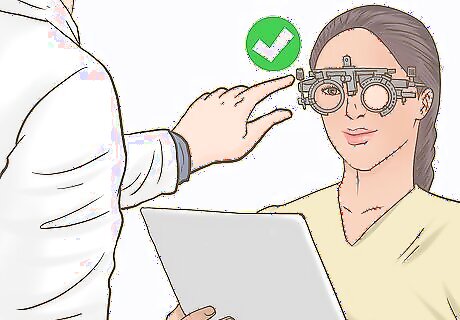
Pass the visual examination. It’s crucial that certified technicians have good eyesight in order to perform their jobs successfully. The visual exam may vary from company to company, but generally it will test your ability to read a variety of text sizes up close and tell the difference between color contrasts and gradations. Your visual examination will usually be administered by someone at your company. You may also be able to take the test at a central agency like ASNT.

Request the official certification document from your employer. Creating the official certification is the responsibility of your employer and you will obtain it from them. Once you’ve completed the initial training, examinations, and experience requirements specified in your employer's Written Practice, you’re eligible for certification. The documentation might be a formal certificate or in letter format; your employer will decide how to issue the certification.



















Comments
0 comment